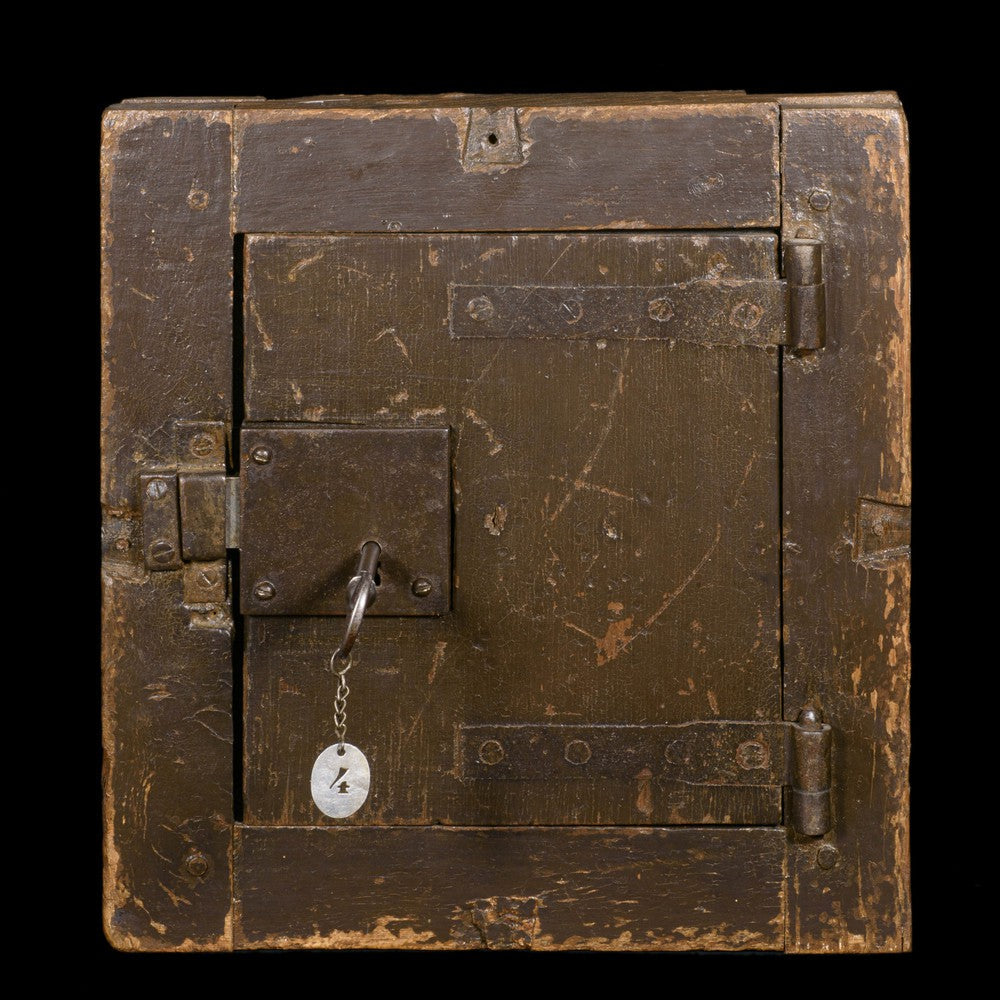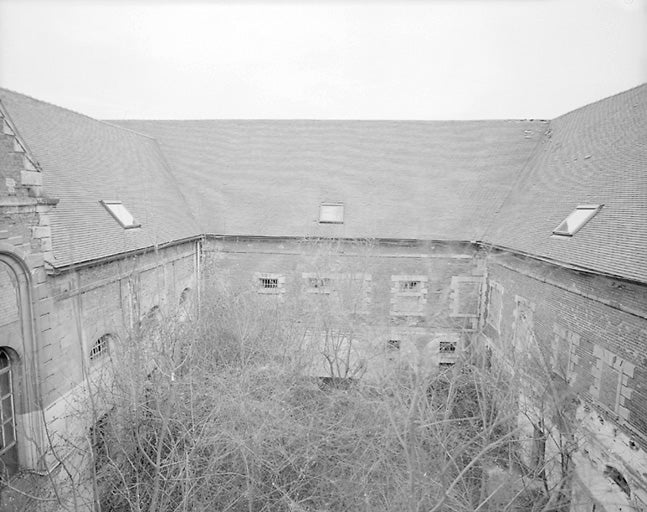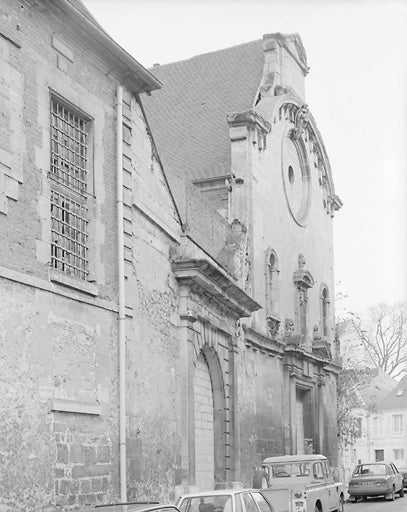ANCIENT CONVENT DOOR PEEPHOLE - ODDITIES
SOLD — This object is now part of a private collection
ANCIENT CONVENT DOOR PEEPHOLE - ODDITIES
Our prices are in euros, the prices converted in dollars or other currencies can vary according to the rate.
Free Worldwide Shipping – Secure and Protected Delivery
ref: #RK00-313Couldn't load pickup availability
This old peephole or cell door hatch alone embodies an important part of French history, having witnessed many significant events over the years. Its apparent robustness, decorated with wrought iron fittings, testifies to the rigor and security inherent to its original use.
This remarkable artifact bears the marks of time, each notch and each fiber of the wood revealing a unique story. The solid lock, in perfect working order, evokes the countless moments when it ensured the security of the premises which, at one time, were imbued with the austere character of a prison.
The small detail of the key, a numbered plaque bearing the number 4, adds a personal dimension to this historical relic. Each rotation of this key seemed to unlock parts of history, revealing secrets and often moving destinies.
The origin of this object dates back to the former convent of the Congregation in Laon in the north of France, which served as a place of detention from 1792 until its closure in 1972. This site, steeped in centuries-old history , had begun as a convent of the sisters of the Congregation of Notre-Dame in 1624, erected under the invocation of Saint Ignatius. The nuns moved there in 1632, and over the years, the place evolved to accommodate a girls' college in 1694.
The tumultuous history of the convent does not end there, as it was closed in 1790, becoming a remand center for refractory priests from 1792 ( Refractory priests were members of the Catholic clergy in France who refused to take the oath to the Civil Constitution of the Clergy adopted during the French Revolution in 1790. This oath required the submission of priests to the state, which many considered unacceptable interference in religious affairs. By refusing the oath, these priests were often persecuted, arrested and imprisoned, marking a period of tension between Church and State during the Revolution.
In 1831, the old convent, once a place of devotion and spirituality, underwent a major transformation which sealed its destiny in history. That year, it underwent a significant metamorphosis to become a penal institution, thus marking a new era in its existence. Walls that had once resonated with the prayers of nuns and the peaceful echoes of monastic life were transformed into silent witnesses to the often dark and tumultuous stories of prison life.
At the heart of this transition, the object in question, this door peephole, played a crucial role. This robust trapdoor became the guardian of the secrets buried in the cells. Throughout the decades that followed, he witnessed the alternation of the steps of nuns and those of prison guards, preserving the echoes of the voices that had passed through the austere corridors of this institution over time.
The clicking of the key, accompanied by the creaking of the peephole opening and closing, echoed within the walls steeped in history. Each turn of the key unlocked a chapter of the past, revealing the moments of hope, despair, repentance and redemption experienced by those who had been held behind these doors.
Thus, this object became a material witness to the radical transformations that this institution underwent, moving from religious contemplation to deprivation of liberty. Through the ages, the peephole persisted, bearing witness not only to architectural changes, but also to the human stories that took place in this place imbued with complex historical richness. By preserving these echoes of the past, it becomes a poignant symbol of how a simple object can encapsulate an entire saga of lives and events over the years.
This object, as a tangible piece of the past, becomes a silent witness to the strong moments which marked the evolution of this enclosure, from convent to prison. It embodies the palpable legacy of a bygone era and invites reflection on the lives that were influenced and shaped by the walls that surrounded it. Oddities collection
PERIOD : 18th century
DIMENSION : 34cm X 32cm
SIZE : 13.4" X 12.6"







